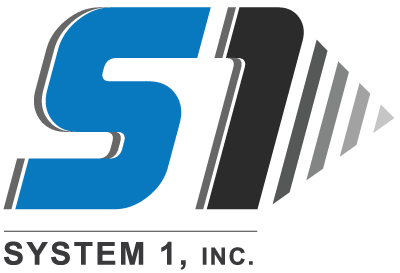Critical Asset/Service Identification and Planning
The private sector and government agencies provide items and services that serve the public health and safety, economic stability, and national security. These critical items and services serve to ensure that big picture issues are provided when needed. Medicine and health protection equipment, components to generate and transmit energy, agricultural equipment and refrigeration for the food supply, and chemical for the production of clean air and water are all examples of item and services that need to be furnished to support our way of life. Often significant challenges to the supply chain not adequately considered and planned for.
System 1 supports supply chain identification and planning both in the private sector and the Federal government. Using our customer focus, we have touched on many of the 18 infrastructure sectors. This includes:
- The identification of critical item and services necessary production of those supporting the infrastructure,
- We can identify criteria for choosing those critical items,
- System 1 works with leadership and line management to facilitate what supply chains must be protected to ensure the viability of a corporate or an infrastructure service, and
- We can help prioritize what must be protected from based on where the item or services is geographically provided, meeting cybersecurity requirements, or building in quality.
Supply Chain Risk Management and Mapping
System 1 supports the development and implementation of Supply Chain Risk Management (SCRM). SCRM reduces supply chain vulnerability via a coordinated, holistic approach ideally involving all supply chain stakeholders identify, analyze, and address potential single pointes of failure (SPOF), whether an item or service, within or affecting the supply chain. Risks to the supply chain range from shortages within a geographical or geopolitical area to counterfeit products. Supply chains are fundamentally ill-equipped to cope with increasing numbers of unplanned disruptions.
System 1 mitigates supply chain risks by leveraging an all-risk approach which addresses a wide variety of operational disciplines including risk management, finance, schedule, cybersecurity, and quality to ensure an uninterrupted and resilient supply chain in the event vulnerabilities and unforeseen events. The nature risk of we can evaluate include resource, operational and demand, security, demand, macro, policy, and competitive. The core concept is to incorporate supply chain resilience as part of the solution so that the supply chain is agile and can adapt to events and situation changes.
Interdependency Analysis and Operational Monitoring
Both in the private and public sector there are independencies that must be addressed in a complex supply chain. System 1 analyses the interdependence existing both within and among supply chains (both within and among supply chains). We can put in place metrics and tools to monitor the changing risk environment on an ongoing basis. This allows System 1 to look for changes in demand and supply and conduct ongoing risk and controls assessments.
System 1 then implements a standard governance and decision-making approach that supports a crisis management framework for major events where predefined responses are inadequate. This results in a desired operating model and standard ways of working that is customized o the organization and their mission. Part of the solution leverages partnering, and collaboration of multiple supply chain constituent organizations involved in the process requires the integration of several supply chain functions


